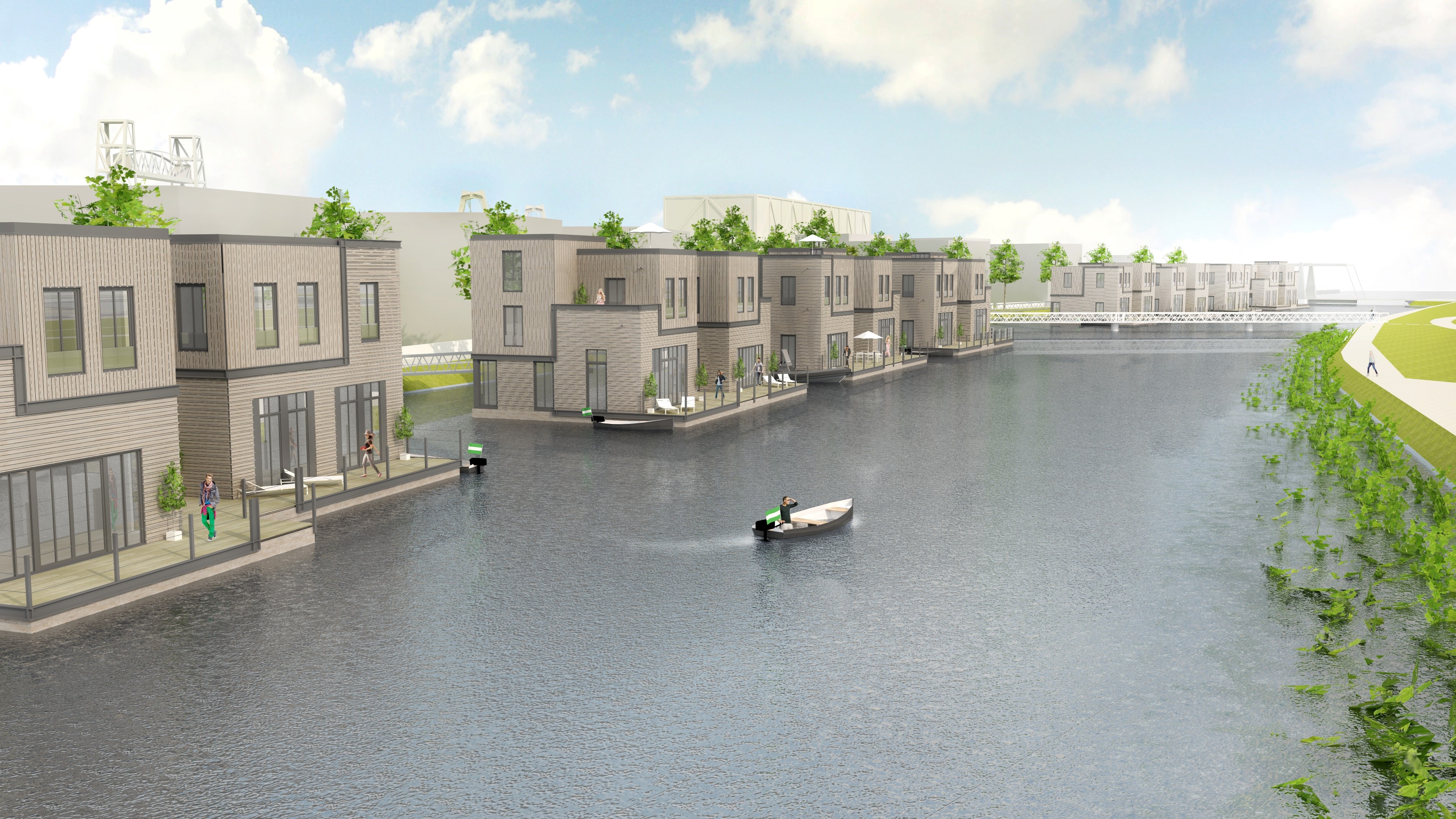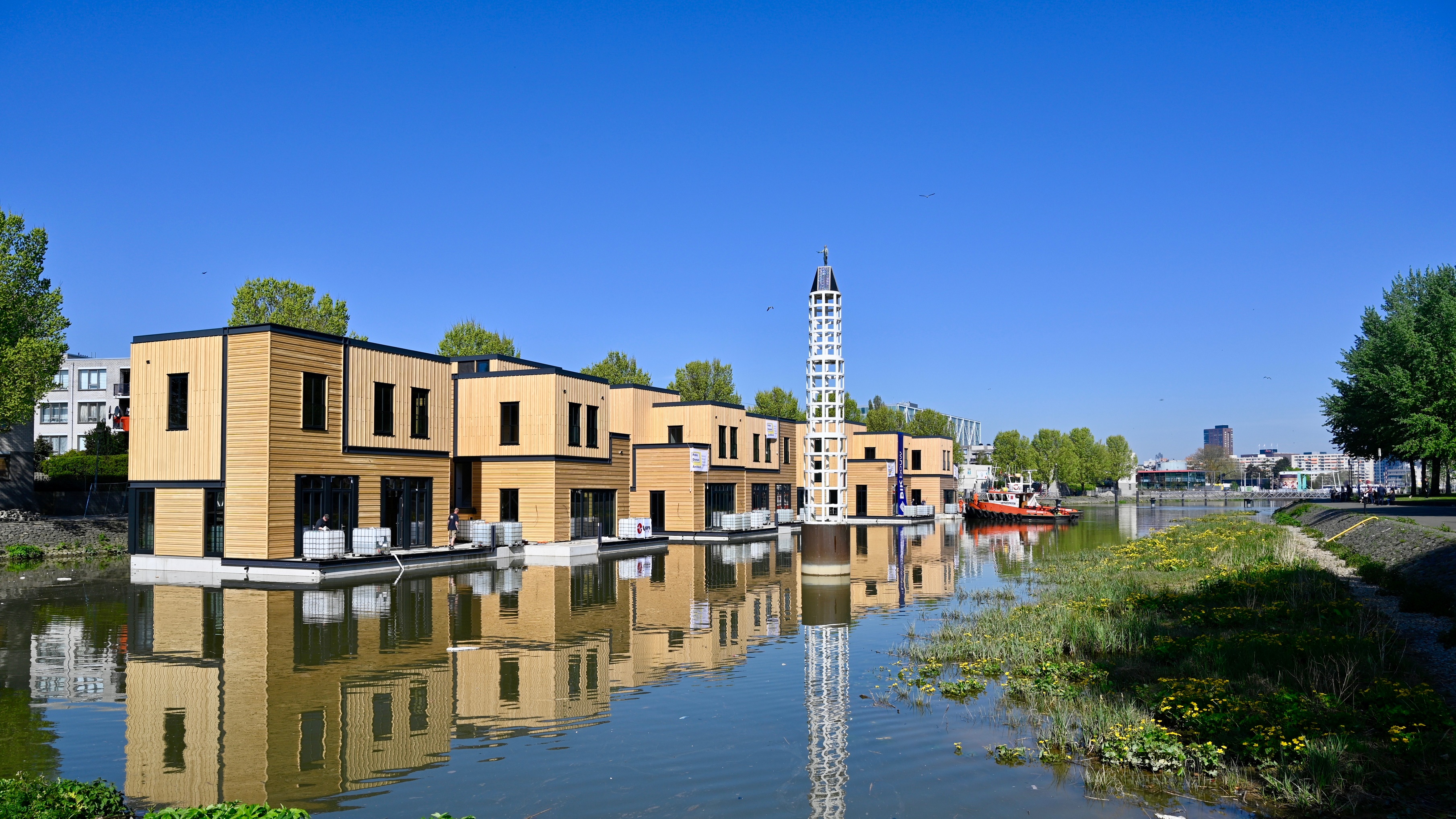The first of a total of eighteen floating harbour lofts were moored in the Nassau harbour in early April and on July 8, the next six of a total of eighteen floating harbor lofts arrived. These six floating houses feature solar panels and have their own water purification system, as well as generating heat using a biomass installation. Rotterdam hopes to be able to provide space for more floating homes in the future. Rotterdam may be growing, but building space in the city is limited. Fortunately there is still space on the water. To get some experience of building on water, the Municipality of Rotterdam went in search of a developer of sustainable floating dwellings. The harbour lofts in the Nassau harbour, a harbour basin as yet unused, are the result.On the 5th of April, the first six floating dwellings (harbour lofts) arrived in the Nassau harbour, a narrow strip of water in Feijenoord just behind the famous Unilever building, which stands suspended over the water on a steel trestle. The transport came from the shipyard in Rotterdam-Oost, on the other side of the Nieuwe Maas, and required considerable navigation skills.
Floating and sustainable
The harbour lofts are exceptional in terms of sustainability; fitted with solar panels, they can also generate heat using a biomass installation. They are equipped with their own water purification system, so there is no need for them to be connected to the sewers. Another notable aspect is the fact that banks categorise these harbour lofts as houses (real estate or property) and are therefore prepared to provide mortgages. The remaining twelve floating dwellings will be towed into the Nassau harbour in two phases in the course of this year. The harbour lofts constitute the first small-scale, floating residential area in Rotterdam. The developer will also be facilitating the introduction of shared bicycles and shared electric cars which the buyers of the floating homes and other residents of the quarter will be able to use.
Ebb and flow
The ebb and flow of the tides are noticeable well into the city due to the open connection to the sea. The height difference between the extremes of the ebb and flow – high and low tide – ranges from one and a half to two metres in the Nassau harbour. This was taken into account both during the construction of the floating homes and the layout of a nature-friendly bank.
A nature-friendly bank
Until recently, the banks of the Nassau harbour were straight and hard, providing hardly any space for plants and animals. The municipality has laid out a nature-friendly bank, with a view to experiencing the tide more intensely. This bank borders on the existing Nassau harbour park and has a step-wise layout. It will ensure an enhanced variety of animals and plants, thus making the living environment even greener. The development of such a tidal bank in a former harbour basin is unique in the Netherlands. Not all plants and animals can live and thrive or in such brackish water, and the municipality will therefore be continuing to monitor development until 2022. An increase in varieties of fish, water plants and marginal plants (vegetation), as well as insect-like water creatures (macro fauna) will imply a massive improvement of water quality.
Floating homes have a big future potential
Rotterdam hopes to be able to accommodate more floating homes in the future. Says alderman Bas Kurvers: ‘We wanted to get some experience with floating constructions, so we challenged the market to come up with a plan for sustainable homes on the water. I am pleased with the realisation of the harbour lofts by developer Team Havenloft in the Nassau harbour, and I would definitely like to provide space for more floating homes in Rotterdam’.Other floating constructions in Rotterdam include: the Floating Pavilion, the Floating Wood , the Aqua Dock ,the Floating Farm.Nassau harbour forms part of River as a Tidal Park, a programme facilitating tidal parks and tidal banks in the region. Nassau Harbour Tidal Bank is being funded by Rijkswaterstaat, the Province of Zuid-Holland and the Existing Rotterdam Area scheme. In addition, the programme is supported by EU LIFE financing.
Related brand partners
Media library for this story
No items found
